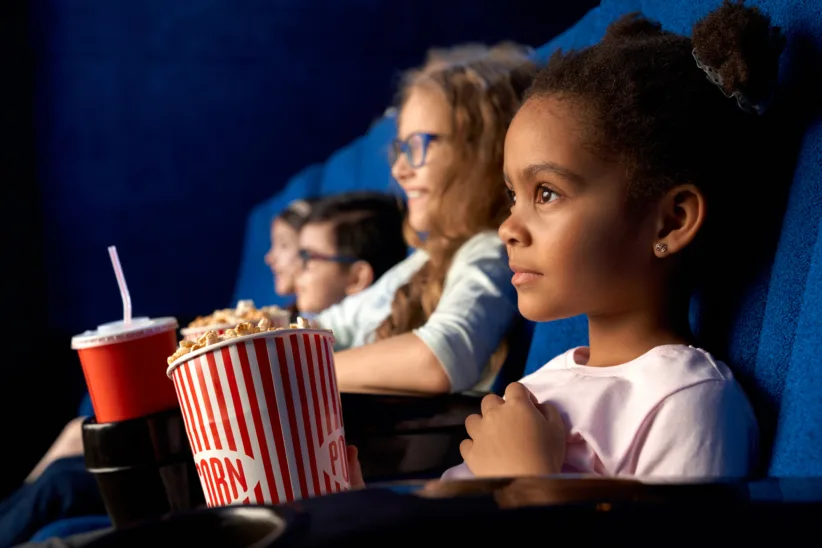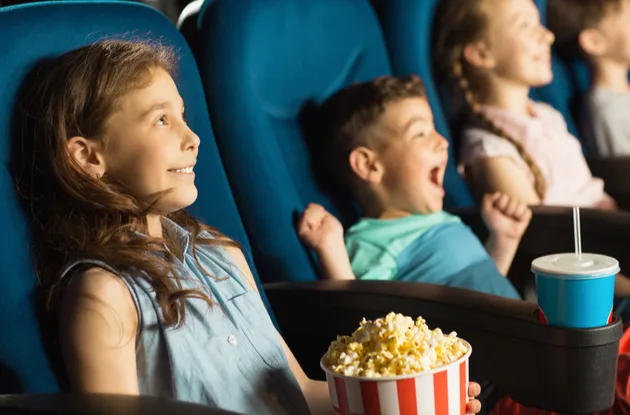New York families now have a number of unique options when it comes to exploring the city’s myriad museums and galleries. Several new art enrichment programs have been successfully launched in recent years, lending families an opportunity to experience art from different perspectives and have fun in the process.
• “Making museums fun for families” is what Judith Shupe, director of Art Smart Adventures, keeps that in mind when designing and implementing her programs, which encompass practically every period in art history. Art Smart offers several unique programs geared for families with children ages 4-12, including “Private Expeditions”, “Art Hunt Treasure Maps”, and drop-in “Saturday Public Programs”. In the personalized “Private Expeditions” program, parents (of one to five children) work closely with Shupe to develop curricula, which could entail a one-time class or a semester-long adventure. Shupe also has her own list of expedition ideas, but these are sometimes generated from the children’s interests. For example, she has designed art history expeditions for families planning a trip to Rome, and has explored chess sets from around the world. Art Smart’s “Public Art Hunts” are monthly two-hour theme-based museum classes and scavenger hunts. Children have passport books and receive stickers as they search throughout the relevant galleries. Where appropriate, an art project or literature is integrated; Shupe also encourages parents to continue the discussions at home. The next “Art Hunt” is “Finding Fish”, slated for January 31, 10:30am-noon, at the American Museum of Natural History. “Art Hunt Treasure Maps” are resources that can be downloaded from the program’s website by families who want to independently explore. The first “Treasure Map” issue, called “Mummies in the Making”, provides a child-friendly art history narrative, guided art hunts throughout Egyptian art galleries, background reading lists, an art activity and links to websites. The next issues will be about Native Americans and Greek mythology. With a background in business and a graduate degrees in art history, Shupe started her business in June 2002, and credits “over a decade of experiences” as a former artist, gallery worker, art historian and museum lecturer with preparing her well for her current role. The most rewarding part of the job, she says, is “bringing families into the museums and helping them realize that art is accessible.” Shupe says she enjoys making connections with families, and credits them with inspiring her as she expands her programs. Art Smart works with preschools and also coordinates birthday parties. For more information, call (212) 595-4444 or visit www.artsmart.com.
——————————————————
• Hi Art! consistently integrates a plethora of cultural activities — from creating and looking at art, learning operas and ballets, dancing, singing, and listening to music and stories. Founder and director Cyndie Bellen-Berthezene believes children should use their hands and bodies to express themselves, and provides both in-class studio time at her new artist’s studio in Chelsea, and visits to galleries and museums. Among the many offerings of her program are “Hi Art!”, “Come In and Paint”, and “Culture Bugs.” Started in 1994, Hi Art! offers semester-long classes for babies to pre-teens, with many mixed-age groupings. The program strongly encourages adult participation, and includes an extensive parent guide discussing how to work with children in and out of class. Bellen-Berthezene describes Hi Art! as a “large-scale interdisciplinary program that is interested in very long-term projects.” Such projects, she says, “help children develop long-term focus and language skills to talk about profound ideas that are important to them.” Giving children a sense of mastery over a project is vital to getting children to “think outside the box,” she says, adding that creating a space for them that’s “comfortable and empowering” is equally important. Hi Art’s! core musical work this semester is Stravinsky’s opera, The Nightingale. Every other week, in-studio, students undertake an in-depth study of the score, embarking on multi-media interpretations through music, movement, and art. On alternating weeks, the students visit galleries and museums. Of great value, Bellen-Berthezene says, is teaching children how to think and interpret independently, and getting them to understand the creative process. For example, she may give black and white paint to her students and ask them to experiment and create; then they visit a museum to see the work of an artist who paints in black-and-white. Her philosophy, she says, is “to grow children as big as they can grow in a slow way, without pushing.” The “Come In and Paint” program engages students ages 4-12 in entirely hands-on creativity with talented contemporary artists, in a workshop setting. The well-established summer camp, Culture Bugs, features three half-day programs, with a full-day option for older children. Hi Art! also offers weekend interactive concerts and Sunday mini-lessons. Bellen-Berthezene says she was inspired to start Hi Art! when her daughter was young; she had noticed a citywide deficit in programs for children’s artistic development. Her specialty is contemporary art, and her artistic background includes accomplishments as an opera singer, professional dancer and working painter. She also holds a Ph.D. in Slavics, and has taught Russian language and literature. For further information, call (212) 362-8190 and visit www.hiartkids.com.
——————————————————
• Museum Adventures! holds weekly one-hour classes that introduce children ages 3-10 to visiting museums. Founded in January 2002 by Natasha Schlesinger and Jennifer Ratner, the program focuses on art — from ancient to contemporary periods, and from painting to decorative arts. Classes are taught in small groups at over 25 museums throughout the city. Each theme-based class combines interactive learning in an exhibit, with a story and original art project. Recent projects have included making felt pouches when viewing an exhibit about Native Americans, and creating team baseball banners and decorating bats at a baseball exhibit. The goal, the founders say, is to “give children the ability to not just see art, but to really look and connect to the art,” Ratner says. The founders recognize that children may become easily frustrated in museums because they can’t touch the artwork, so they bring their own props, such as magnifying glasses, costumes, mini-globes and maps. According to Schlesinger and Ratner, Museum Adventures provides a new twist on seeing art, because “they find what can be related in the art and present that to the children,” giving them the tools to appreciate and enjoy art “as they take journeys to different museums.” Schlesinger notes that “people tend to think that museums may not be fun, but the children and parents have a wonderful time.” Ratner says her enthusiasm for the program “translates to the children. It’s so rewarding to see what connections the children make and how they can relate to art.” Schlesinger holds a Master’s degree in the decorative arts and has worked as an independent art historian, art consultant and lecturer. Ratner is a pediatric hematologist-oncologist, with a strong interest in art and a love of working with children. The duo was inspired to start the program after they had children and saw a need for art enrichment classes. Museum Adventures is expanding to include Saturday classes, school visits, birthday parties and drop-in classes during winter vacation. For more information, call (212) 794-2867 or visit www.museumadventuresnyc.com.





















